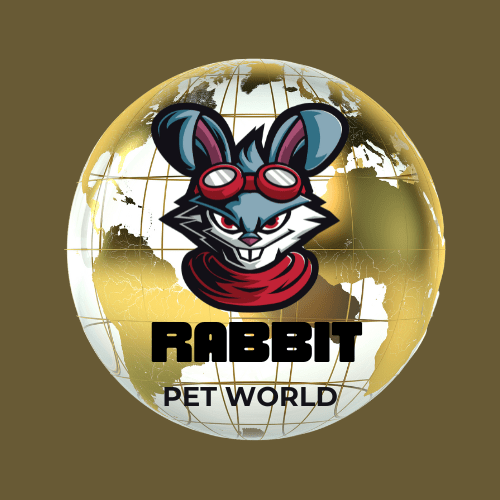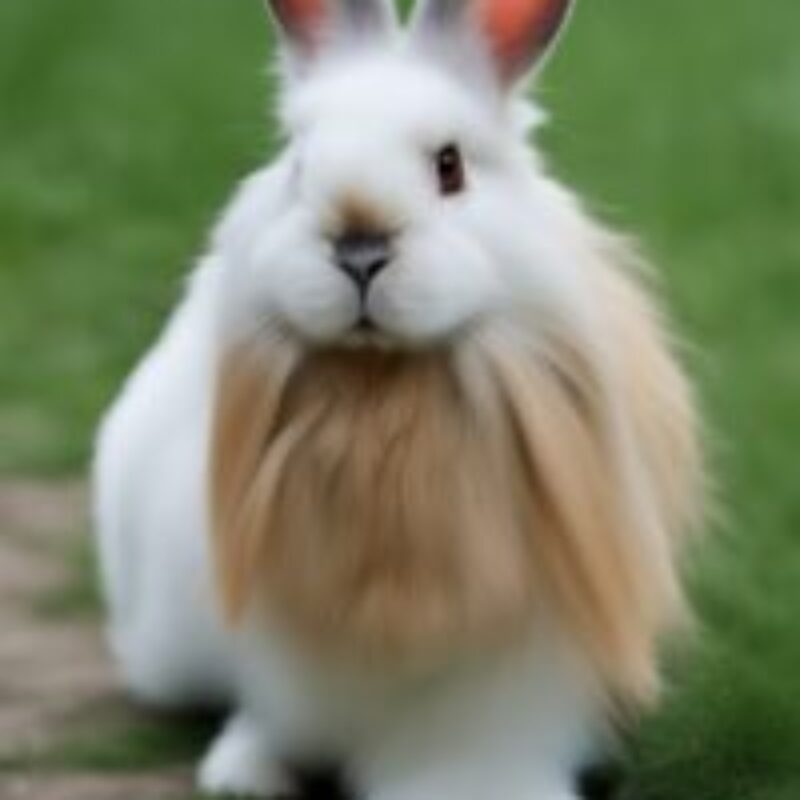If you are a proud owner of a Lionhead rabbit or planning to bring one home, you have made a fantastic choice! These fluffy, adorable creatures are known for their distinctive mane-like fur and playful personalities. However, like any pet, they require proper care and attention, especially when tracking their growth and development. This article will walk you through everything you need about Lionhead rabbit growth tracking, from their early days as kits to their full-grown adult stage. By the end, you will feel confident in providing the best care for your furry friend.
- Tracking Your Lionhead Rabbit's Growth Matters:
- Step 1: Understanding the Lionhead Rabbit Life Cycle:
- Step 2: Tools for Tracking Your Rabbit's Growth:
- Step 3: Feeding for Optimal Growth
- Step 4: Monitoring Health and Behavior
- Step 5: Creating a Comfortable Environment
- My Lionhead Rabbit's Growth Journey
- Why You Should Start Tracking Your Rabbit's Growth Today
- Final Conclusion:
Tracking Your Lionhead Rabbit’s Growth Matters:
Before knowing the key growth factors, we must consider why growth tracking is so important. Just like humans, rabbits go through different life stages, each with unique needs. Monitoring your Lionhead rabbit’s growth helps you:
- Provide Proper Nutrition: A growing rabbit needs the right balance of nutrients. Tracking your pet rabbit’s growth helps you adjust their food accordingly.
- Detect Health Issues Early: Sudden weight loss or slow growth rate can be signs of underlying health problems.
- Build a Strong Bond: Understanding your rabbit’s development helps you connect with them better and meet their needs.

Now, we go through various stages of Lionhead rabbit growth tracking!
Step 1: Understanding the Lionhead Rabbit Life Cycle:
To track your rabbit’s growth effectively, you must know what to expect at each stage of their life. Here’s a quick breakdown:
1. Kits (0–3 Months)
When Lionhead rabbits are born, they’re called kits. They’re tiny, blind, and utterly dependent on their mother. During this stage, their primary focus is feeding and growing. By the time they’re 2–3 weeks old, they’ll start exploring their surroundings and nibbling on solid food.
What to Track:
- Weight: Kits should gain weight steadily. A healthy kit will weigh around 30–50 grams at birth and double its weight within a week.
- Fur Development: Their soft baby fur will start to thicken, and you’ll notice the beginnings of their signature mane.
Pro Tip: Handle kits gently and minimally during this stage to avoid stressing the mother.
2. Adolescence (3–6 Months)
This stage is called the “teenage” phase for your Lionhead rabbit. In the teenage phase, your rabbit will become more active and curious and may even show some rebellious behaviour (yes, rabbits can be stubborn, too!). Your rabbit’s mane will start to fill out, and it will reach about 75% of its adult size.
What to Track:
- Weight: They should gain weight consistently, reaching around 2–3 pounds by 6 months.
- Behaviour: Watch for signs of puberty, such as spraying or territorial behaviour. Therefore your pet rabbit is ready to consider spaying or neutering.
3. Adulthood (6 Months and Beyond)
By 6 months, your Lionhead rabbit is considered an adult. They’ll reach their full size, typically weighing between 2.5 and 3.75 pounds. Lionhead bunny lion look mane will fully develop and have a calm, settled personality.
What to Track:
- Weight: Maintain a stable weight. Sudden changes could indicate health issues.
- Activity Levels: Ensure they’re active and playful, as lethargy can signify illness.

Step 2: Tools for Tracking Your Rabbit’s Growth:
Now that you know what to expect, let’s discuss the tools you’ll need to track your Lionhead rabbit’s growth effectively.
1. A Digital Scale
A small, accurate digital scale is essential for monitoring your rabbit’s weight. Weigh your rabbit weekly and record the measurements in a journal or spreadsheet.
2. Growth Chart
Create or download a Lionhead rabbit growth chart to compare your rabbit’s progress with average growth milestones. This act will help you spot any deviations early.
3. Measuring Tape
While weight is the primary indicator of growth, measuring your rabbit’s length and height can also provide valuable insights.
4. Health Journal
Keep a journal to record weight and measurements, behaviour, diet, and health concerns. This will be invaluable during vet visits.

Step 3: Feeding for Optimal Growth
Nutrition plays a crucial role in your Lionhead rabbit’s growth. Here’s a step-by-step guide to feeding your rabbit at each life stage:
1. Kits (0–3 Months)
- Primary Diet: Mother’s milk (or a suitable milk replacer if the mother isn’t available).
- Supplemental Food: Introduce high-quality alfalfa hay and pellets around 2-3 weeks.
2. Adolescence (3–6 Months)
- Primary Diet: Transition from alfalfa hay to timothy hay, which is lower in calcium.
- Pellets: Continue feeding pellets, but reduce the quantity slightly to prevent obesity.
- Fresh Veggies: Introduce small amounts of rabbit-safe vegetables like carrots, spinach, and parsley.
3. Adulthood (6 Months and Beyond)
- Primary Diet: Timothy Hay should make up 70% of their diet.
- Pellets: Limit pellets to 1/4 cup per day.
- Fresh Veggies: Offer a variety of vegetables daily, but avoid high-sugar options like fruits.
Pro Tip: Always provide fresh water. Do not change your rabbit’s diet suddenly because this can upset your pet rabbit’s digestive system.
Step 4: Monitoring Health and Behavior
Tracking growth isn’t just about numbers; it’s also about observing your rabbit’s overall health and behaviour. Here’s what to look for:

1. Signs of Good Health
- Bright, clear eyes
- Clean ears and nose
- Shiny, well-groomed fur
- Consistent appetite and water intake
2. Red Flags
- Weight loss or lack of growth
- Lethargy or reduced activity
- Changes in stool (diarrhea or no droppings)
- Overgrown teeth or difficulty eating
If you notice any of these signs, consult your vet immediately.
Step 5: Creating a Comfortable Environment
A happy rabbit is a healthy rabbit. Ensure your Lionhead rabbit has a safe, comfortable space to grow and thrive. Here’s how:
- Spacious Cage: Provide a cage at least 4 times the size of your rabbit.
- Exercise Area: Allow daily playtime in a rabbit-proofed area.
- Toys and Enrichment: Offer chew toys, tunnels, and puzzles to keep them mentally stimulated.
- Grooming: Brush their fur regularly to prevent matting and hairballs.
My Lionhead Rabbit’s Growth Journey
When I first brought home my Lionhead rabbit, Snowball, I was amazed by how tiny and fragile she was. As a first-time rabbit owner, I was nervous about tracking her growth. But I quickly got the hang of it with some research and the right tools. By the time Snowball reached adulthood, she had blossomed into a confident, playful bunny with a luxurious mane. Watching her grow was one of the most rewarding experiences of my life, and it strengthened our bond immensely.
Why You Should Start Tracking Your Rabbit’s Growth Today
Tracking your Lionhead rabbit’s growth isn’t just about ensuring they’re healthy—it’s about giving them the best life possible. With the right tools, knowledge, and a little effort, you can provide your rabbit with the care they deserve. Plus, it’s a great way to bond with your furry friend and create lasting memories.
If you’re ready to start your Lionhead rabbit growth tracking journey, invest in a reliable digital scale, create a growth chart, and keep a detailed health journal. Your rabbit will thank you with endless cuddles and binkies!

Final Conclusion:
Raising a Lionhead rabbit is a joyful and fulfilling experience. You wish that your rabbit lived with you as long as possible. Therefore, your rabbit pet will find a happy life depending on tracking its growth and providing proper care. Remember, every rabbit is unique, so don’t stress if your bunny doesn’t follow the exact growth timeline. You are doing a great job as long as it’s healthy and happy! So, what are you waiting for? Start your Lionhead rabbit growth tracking journey today and watch your furry







